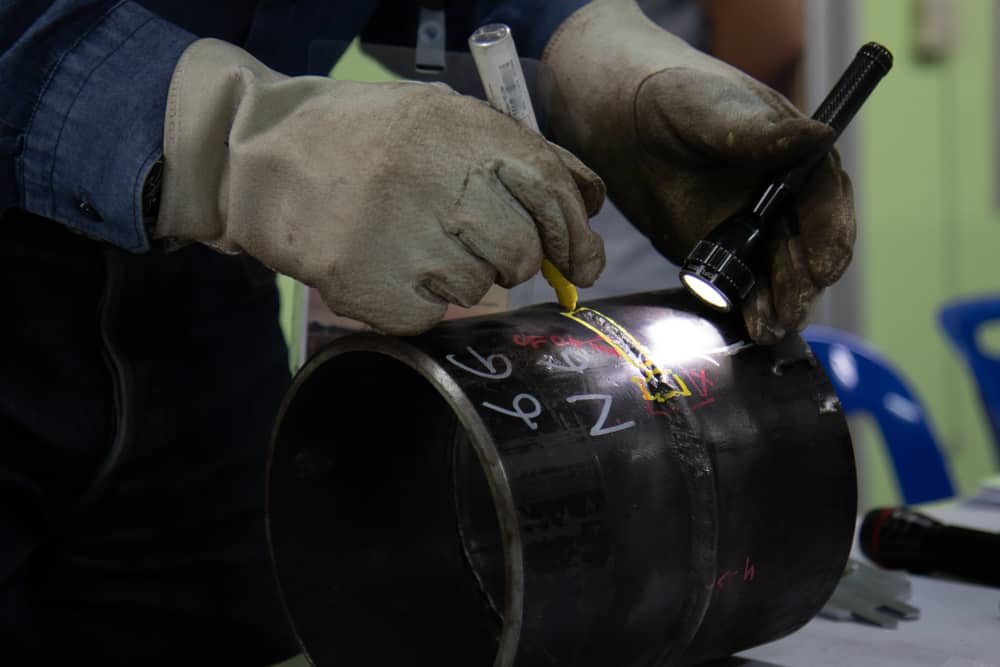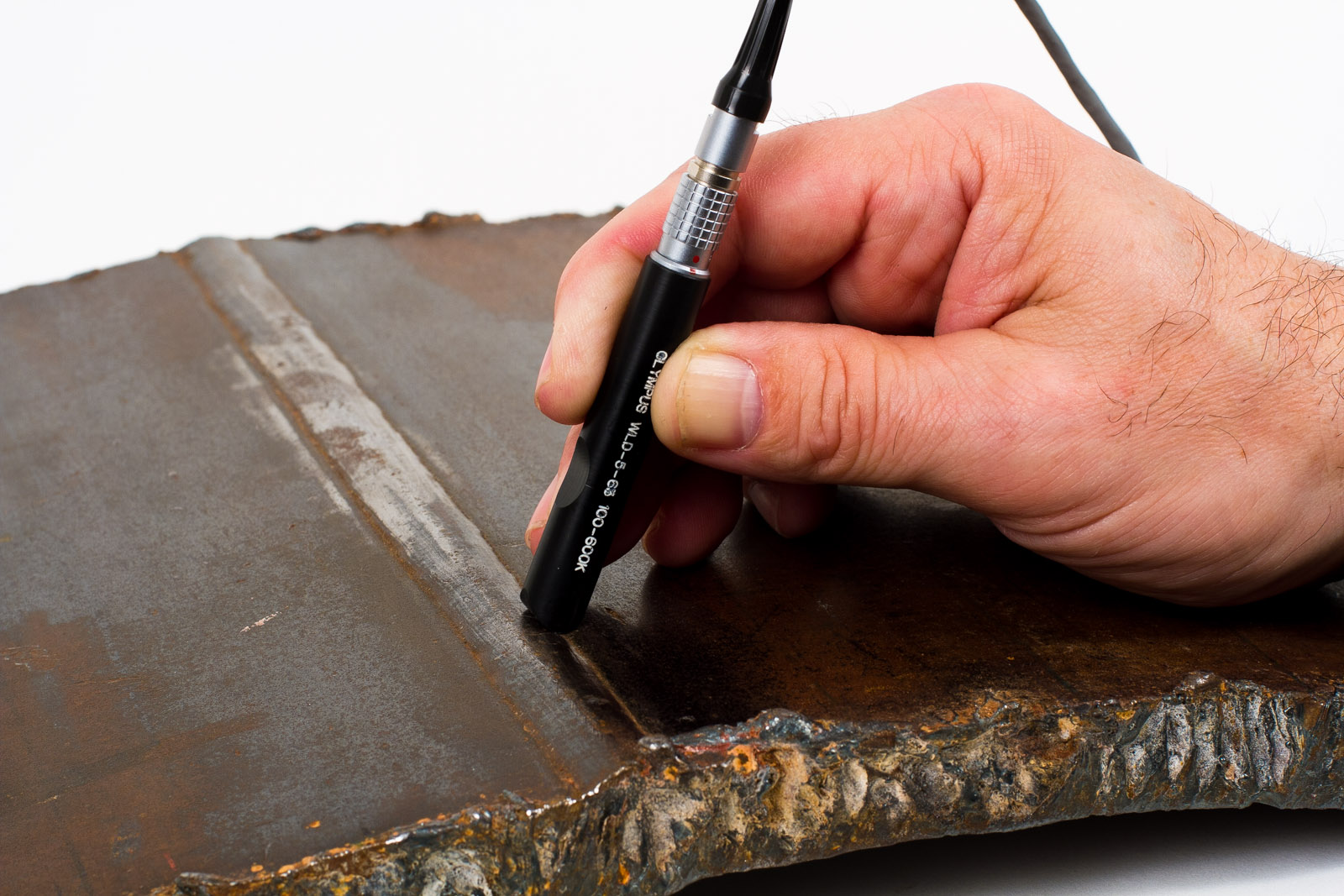Comprehending the Value of Welding Assessment in Ensuring Structural Stability
Welding assessment plays an essential function in preserving architectural stability within the building market, working as a crucial safeguard against possible failures. By systematically determining common issues-- such as porosity and incomplete fusion-- inspections not just copyright high quality standards but also make certain conformity with safety and security policies. The implications of overlooking this crucial procedure expand past prompt security problems, influencing both the durability of structures and the total reputation of companies. As we explore the different examination strategies and their benefits, the question occurs: what are truth costs of neglecting this crucial facet of building and construction?
Duty of Welding in Building And Construction

Along with structural applications, welding is essential in the fabrication of both large and elaborate parts. It enables the customization of parts, enabling designers and designers to bring their designs to fulfillment. The versatility of welding techniques, consisting of MIG, TIG, and arc welding, allows for the efficient joining of different materials and densities, dealing with certain project requirements.
In addition, the innovation of welding innovations has led to enhanced performance and precision in building and construction processes. Automated welding systems boost efficiency while reducing human mistake, thereby promoting better results. As a result, the duty of welding in building prolongs beyond mere setting up; it is an important consider making sure the safety, long life, and general integrity of structures, highlighting its value in the modern building landscape.
Common Welding Issues
The honesty of welded structures is substantially affected by the presence of issues that can endanger their performance and safety and security. Common welding issues consist of porosity, incomplete fusion, undercutting, and slag incorporations, each of which can badly impact the general stamina and toughness of welded joints.
Porosity takes place when gas bubbles are trapped in the weld metal, leading to decreased tensile toughness. Incomplete blend develops when the weld steel does not properly bond with the base steel, resulting in weak joints vulnerable to failing.
Various other flaws, such as excessive spatter and imbalance, can also add to architectural weaknesses. Identifying and addressing these defects throughout the welding procedure is important to ensure the dependability of the final structure. Understanding of these usual welding issues is crucial for engineers and assessors to maintain the stability of bonded frameworks and make certain lasting safety and performance.
Advantages of Welding Assessment
Guaranteeing the integrity of welded frameworks counts heavily on the efficiency of welding evaluation procedures. The primary benefit of welding inspection is the early detection of prospective problems, which can significantly reduce the risk of disastrous failings. By recognizing concerns such as cracks, incomplete blend, or porosity before they intensify, examination processes assist maintain the security and integrity of frameworks.
Moreover, welding evaluation additional resources boosts compliance with sector standards and policies. Complying with these needs is vital for making certain and avoiding lawful repercussions that tasks meet needed safety procedures. This conformity additionally promotes a society of quality assurance, advertising finest techniques amongst welding workers.
In addition, regular examination can cause set you back financial savings over time. By minimizing the possibility of rework or repair services because of welding problems, companies can allot resources more efficiently, inevitably enhancing performance.

Assessment Methods and Specifications
Efficient examination methods and requirements are vital parts of preserving the stability of welded structures. news Common inspection methods include visual examination, ultrasonic screening, radiographic testing, and magnetic fragment testing.
Visual assessment is often the initial step, allowing assessors to identify surface area problems such as cracks or inappropriate bead forms. Ultrasonic screening employs high-frequency acoustic waves to identify inner problems, while radiographic screening uses X-rays or gamma rays to disclose surprise disparities within the weld. Magnetic bit testing works for identifying surface get redirected here and near-surface problems in ferromagnetic products.
Standards play a crucial duty in leading these evaluation processes, with companies such as the American Welding Society (AWS) and the International Company for Standardization (ISO) supplying thorough guidelines. Conformity with these criteria not just guarantees the high quality of welds but also fosters depend on among stakeholders in the architectural stability of the finished product. Adhering to well established examination methods and requirements is essential to achieving trustworthy and lasting bonded structures.
Regulatory Conformity and Safety
Regulative conformity is important for securing the safety and integrity of welded frameworks. Following well-known codes and requirements, such as those established by the American Welding Society (AWS) and the American National Requirement Institute (ANSI), makes sure that welding practices satisfy stringent security and top quality needs. These guidelines are designed to stop failings that can lead to devastating cases, injuries, or death.
Conformity with these guidelines involves regular assessments and evaluations throughout the welding process. Licensed inspectors review welds for high quality, toughness, and adherence to specifications, ensuring that any kind of inconsistencies are promptly dealt with. This aggressive technique not only improves the structural integrity of welded parts but likewise alleviates risks linked with non-compliance.
Additionally, regulative bodies typically require documentation of examinations and compliance records, which function as lawful proof of adherence to security criteria. Companies that focus on regulative conformity not only secure their workforce and customers but likewise improve their online reputation within the sector. Ultimately, understanding and carrying out these guidelines is crucial for any organization aiming to keep high security standards and achieve long-term operational success in welding methods.
Final Thought
In final thought, welding evaluation plays an essential duty in keeping architectural integrity within the construction industry. Inevitably, a commitment to strenuous welding assessment is vital for securing both the workforce and the stability of created frameworks.
The adaptability of welding techniques, consisting of MIG, TIG, and arc welding, enables for the efficient joining of different materials and densities, providing to details task requirements.
Making sure the integrity of bonded structures counts greatly on the performance of welding evaluation procedures (Welding Inspection Milwaukee). In recap, the advantages of welding assessment are multifaceted, critical for guaranteeing architectural stability and functional excellence

Sticking to well-known codes and requirements, such as those set by the American Welding Society (AWS) and the American National Requirement Institute (ANSI), makes certain that welding practices meet strict security and high quality needs. Ultimately, a dedication to extensive welding examination is necessary for guarding both the labor force and the honesty of built frameworks.